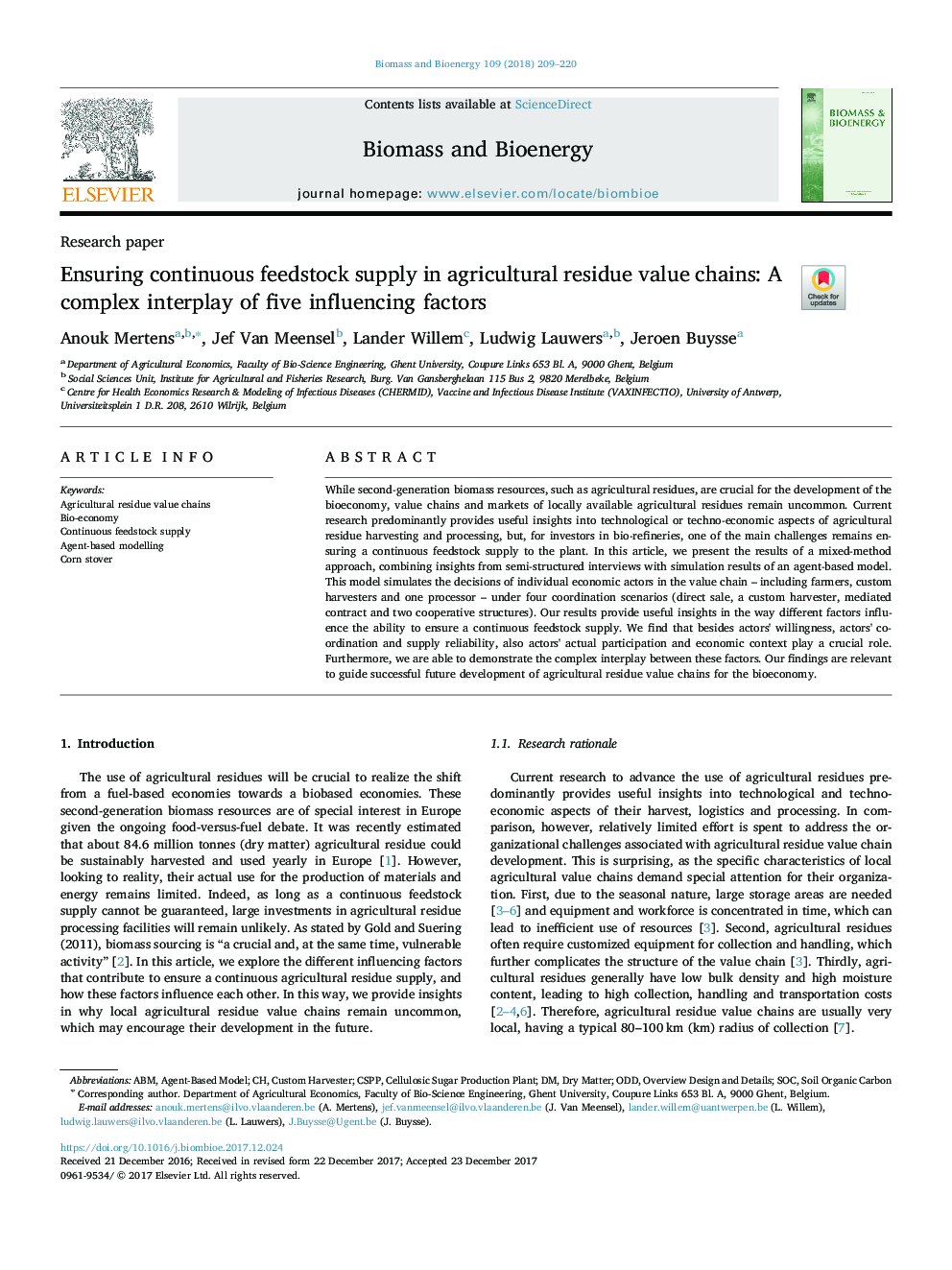| Article ID | Journal | Published Year | Pages | File Type |
|---|---|---|---|---|
| 7063030 | Biomass and Bioenergy | 2018 | 12 Pages |
Abstract
While second-generation biomass resources, such as agricultural residues, are crucial for the development of the bioeconomy, value chains and markets of locally available agricultural residues remain uncommon. Current research predominantly provides useful insights into technological or techno-economic aspects of agricultural residue harvesting and processing, but, for investors in bio-refineries, one of the main challenges remains ensuring a continuous feedstock supply to the plant. In this article, we present the results of a mixed-method approach, combining insights from semi-structured interviews with simulation results of an agent-based model. This model simulates the decisions of individual economic actors in the value chain - including farmers, custom harvesters and one processor - under four coordination scenarios (direct sale, a custom harvester, mediated contract and two cooperative structures). Our results provide useful insights in the way different factors influence the ability to ensure a continuous feedstock supply. We find that besides actors' willingness, actors' coordination and supply reliability, also actors' actual participation and economic context play a crucial role. Furthermore, we are able to demonstrate the complex interplay between these factors. Our findings are relevant to guide successful future development of agricultural residue value chains for the bioeconomy.
Keywords
Related Topics
Physical Sciences and Engineering
Chemical Engineering
Process Chemistry and Technology
Authors
Anouk Mertens, Jef Van Meensel, Lander Willem, Ludwig Lauwers, Jeroen Buysse,
